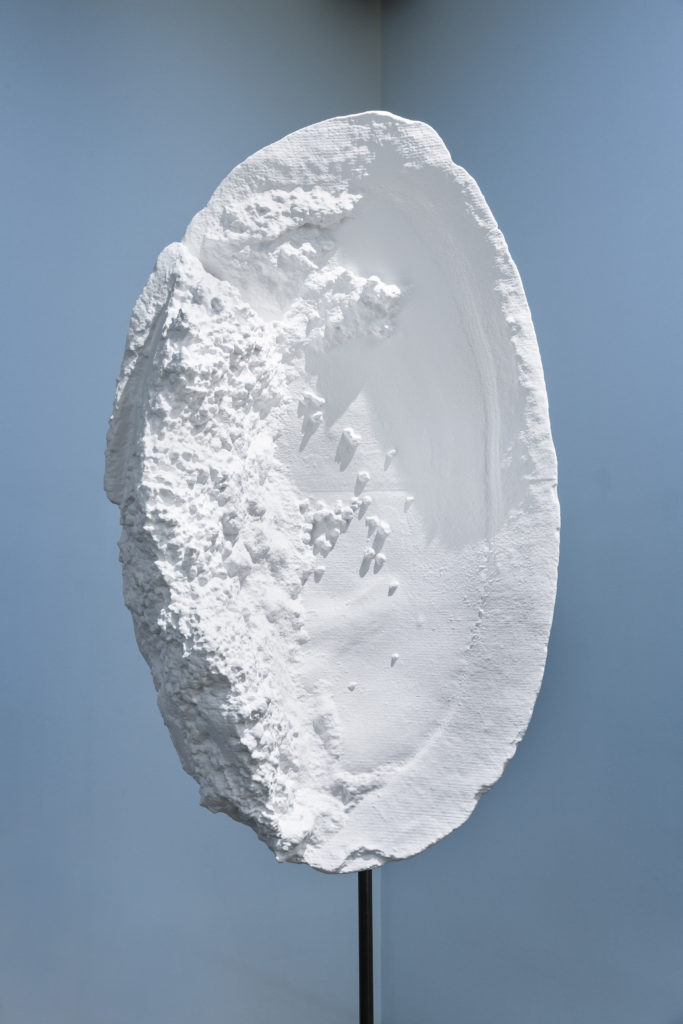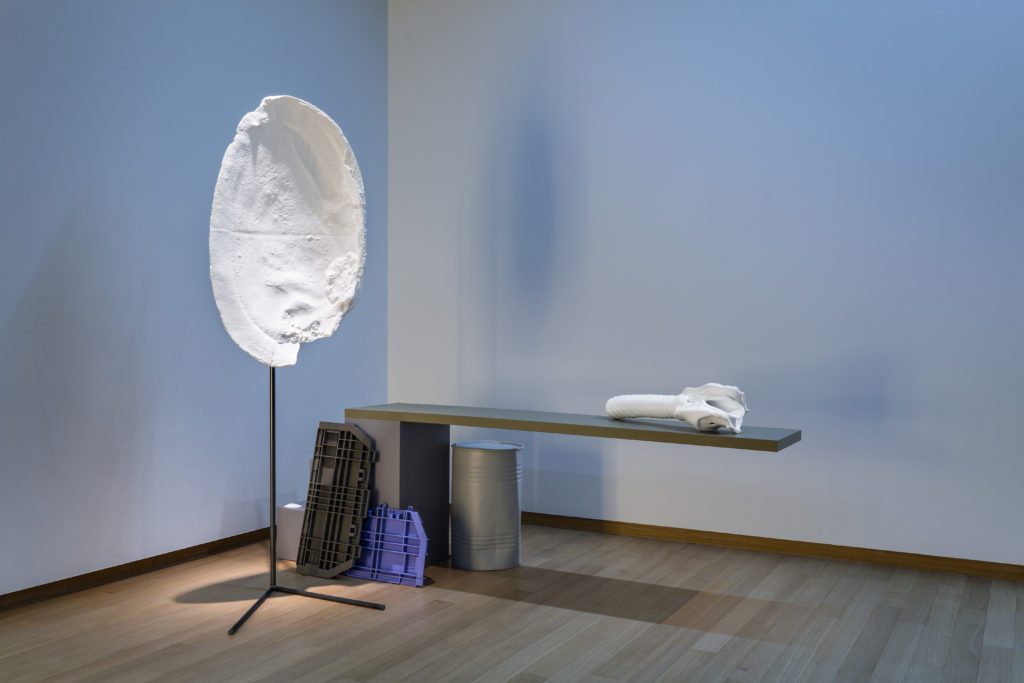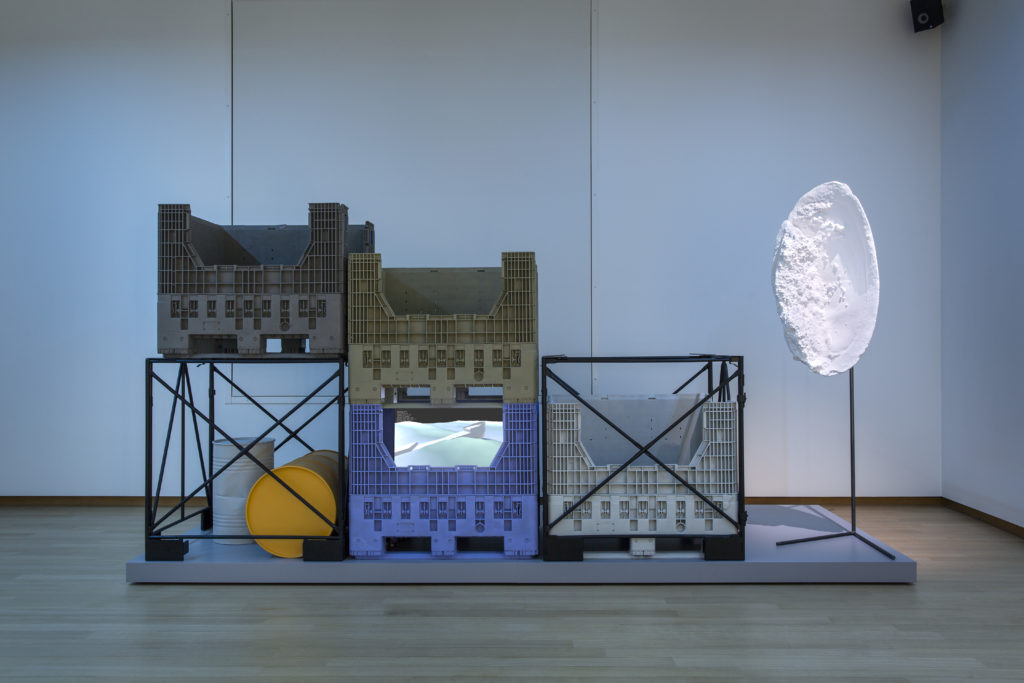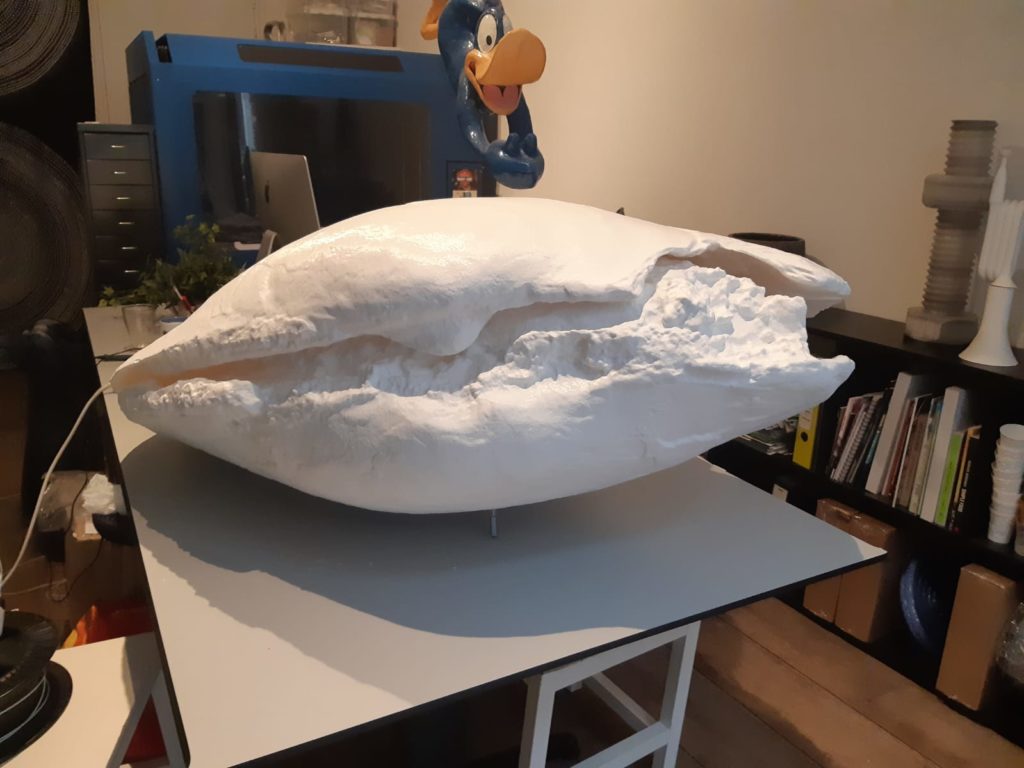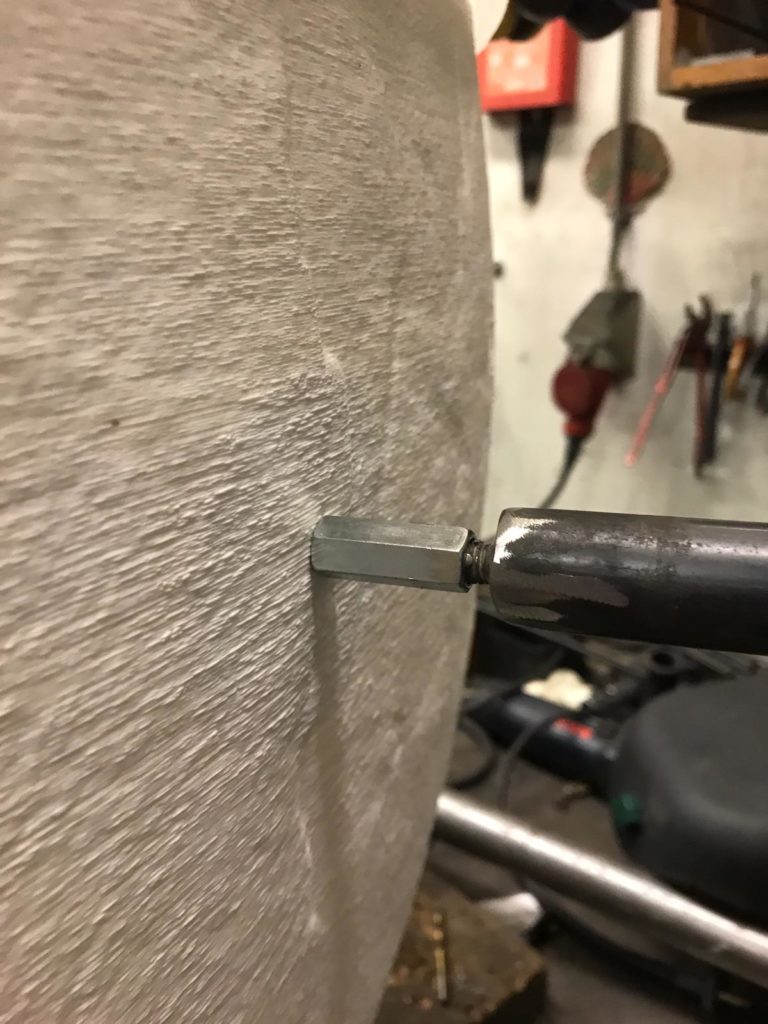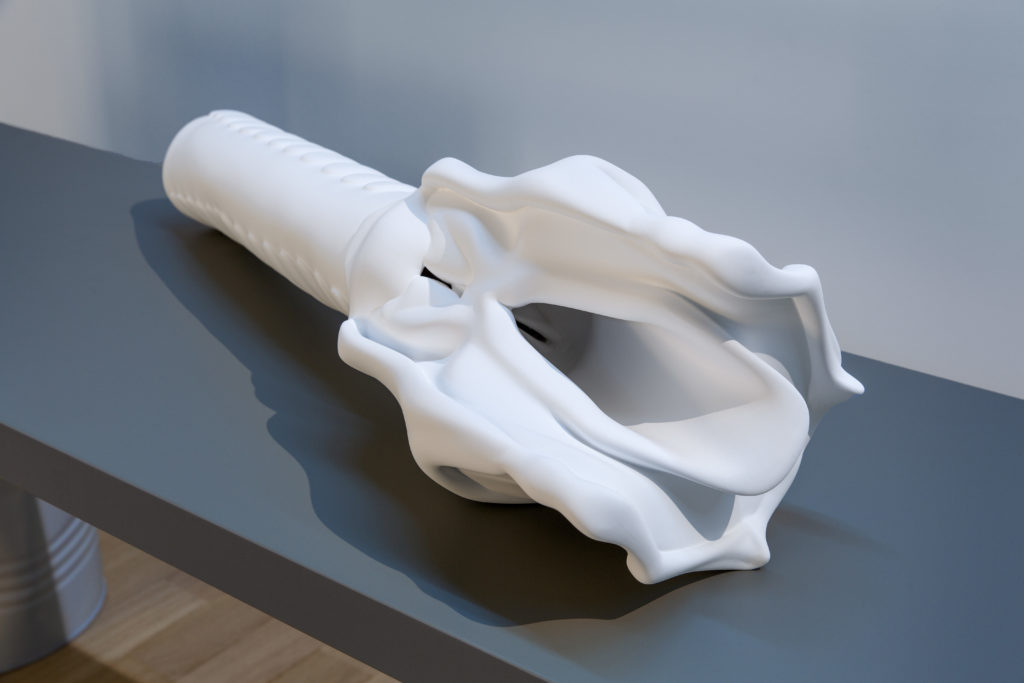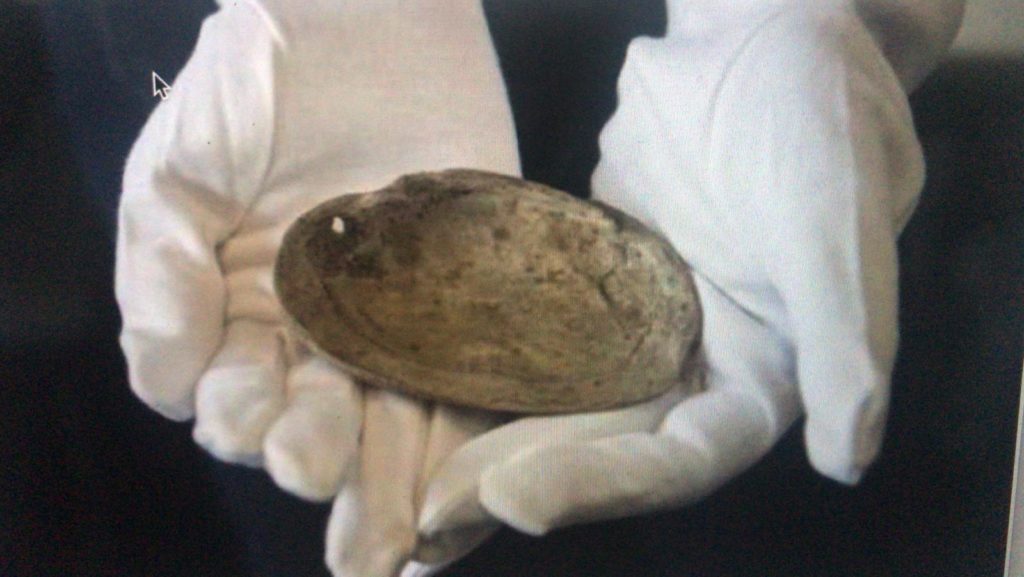Printed ‘blown up’ Scans for Diving Reflex
In Femke Herregraven’s multimedia installation Diving Reflex the greatly enlarged replica of an ancient fresh water mussel and a scaled-up human larynx are featured.
The project is part of her Prix the Rome nomination exhibited in the Stedelijk Museum, Amsterdam.
With ‘Diving Reflex (Because We Learned Not to Drown, We Can Sing)’, Femke continues her research on the notion of the “catastrophe.” In classical Greek tragedy, this concept referred to the final resolution of the story and only became linked to natural disasters in the eighteenth century. On the basis of the fictionalized characters “The Last Man” and Elaine Morgan, she speculates about survival strategies, and uses the human diving reflex as a conceptual tool to explore the meanings of catastrophe. Catastrophe bonds, known as cat bonds, are central to Diving Reflex.
Read the full essay at femkeherregraven.net
Commissioned by: Femke Herregraven
3D prints: Joris van Tubergen
3D scans: Naturalis Biodiversity Center
Exhibited: 2019 Stedelijk Museum Amsterdam, 2021 Bienale South Korea
Produced 2019, 2021

